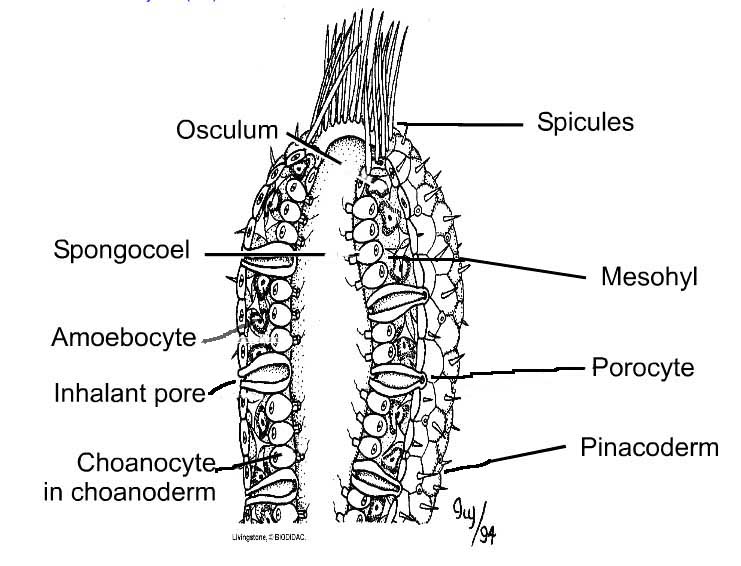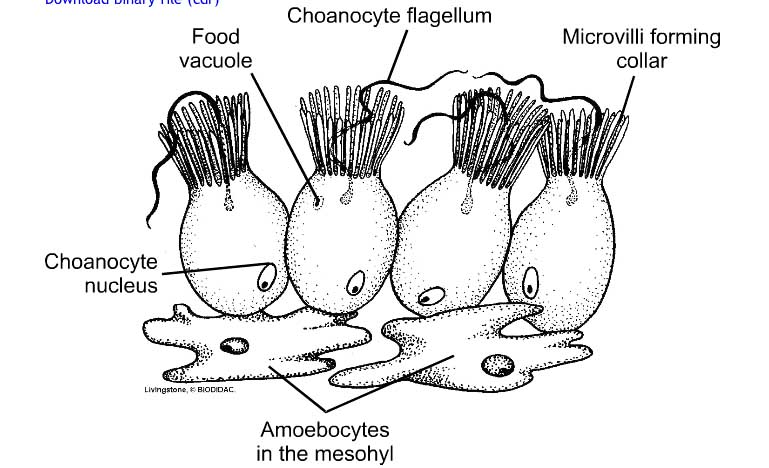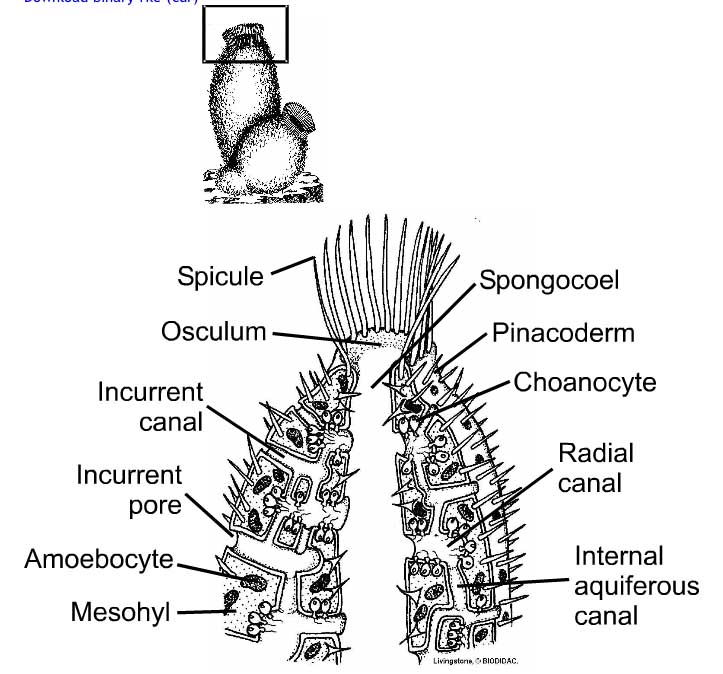

Introduction to Animal Diversity
The Fundamental Problems of Life:
| 1. | Energy procurement |
| 2. | Procurement of raw materials for growth and maintenance |
| 3. | Gas exchange |
| 4. | Waste elimination |
| 5. | Maintenance of water and salt balance |
| 6. | Successful reproduction |
| 7. | Internal transport of materials |
| 8. | Internal communication and coordination of activities |
| 9. Processing information about surroundings (both receiving information and responding) | |
| 10. Dispersal | |
For each group of animals that we study (and for the microbes, fungi, and plants we have already studied) consider the ways that members of that group solve these fundamental problems that are common to all living things.
Sponges - Phlyum Porifera
In addition to your text, please read the following:
http://web.archive.org/web/20020804011531/www.animalnetwork.com/fish2/aqfm/1998/jan/wb/default.asp
and
http://web.archive.org/web/20020804005350/www.animalnetwork.com/fish2/aqfm/1998/feb/wb/default.asp
Also, if you are in my Bio 351 class (Invertebrate Biology), see the additional diagrams and photos here:
Additional Sponge Diagrams and Photos
1. Sponges are sessile animals with simple body structure
2. Best described as a colony of protist-like cells
3. Major cell types and structural features:
Cell types


Structural features
Skeleton types
Some sponges have only one of the above skeletal components, most have 2 or 3 types (which sorts of sponges are best suited for use as bath sponges?)
4. How sponges function:
5. Variety in form (see diagrams in web article)




6. Cool things sponges can do:
7. Ecological considerations
(And here is another BEAUTIFUL video showing how abundant and how LARGE sponges can be! https://www.youtube.com/watch?v=8WaWVuGE-LM )

(click for closeup, or go to p. 655 of Biological Science, by Gould and Keeton)